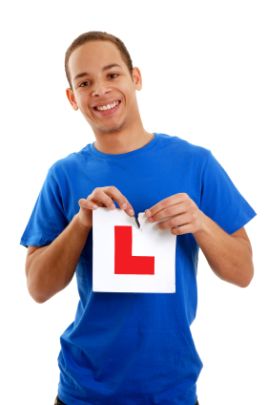What causes accidents: speed
There is a well known saying from safety campaigns which simply says that "speed kills".
Although many people think that you have to be travelling really quickly in order to make an impact sufficient enough to seriously injure someone or to kill them - such as the sorts of speeds you see on the motorway - this is not actually the case.
Indeed even at what you might consider 'low' speeds, like those around streets in towns and cities, just a few mph can make a major difference to the strength of an impact and therefore the severity of an accident, whether or not it involves other people or is a single vehicle crash impact.
Going a little too fast is doubly dangerous. First of all, it means that you have less time to react to an unexpected situation - for instance something running across the road. But secondly, if you hit that object or person at the higher speed then the impact is much more severe too.
This is why you should always stick to speed limits even if you think it is safe to go quicker: it is never safe, because the unexpected could always happen. Travelling at 35mph instead of 30mph where that is the speed limit could lead to the difference between life and death for someone who gets involved in an accident with a pedestrian.
Related Articles...
Cost of a driving theory test
If you are learning to drive a car in the UK, then there is not just the practical test to think about.
You must also pass a theory test in order to be able to take the driving practical test...
What to do when you sell a vehicle
When you sell a vehicle, there are some things that you have to do straight away. As soon as the vehicle is sold you have to tell the DVLA, which stands for the Driver and Vehicle Licensing Agency,...
Using head restraints
Your car will have head restraints in it, but do you take the time to adjust these before using the vehicle and ensuring they are set at the correct level for you? Head restraints in vehicles are...
Tips on joining a motorway
Joining and leaving the motorway are generally considered the more tricky elements of the journey. When it comes to leaving the motorway, it is all about selecting the right exit and moving over to...
Vehicles that cannot be used for a practical test
The vast majority of drivers will of course use the vehicle of their instructor or driving school when they take their practical test and so will not need to worry about the vehicle.
However...
Taking the theory test if you don't speak English
Not everyone who takes the Driving Theory Test will be confident enough in their ability to speak and understand English to take the test. Whilst some people in Wales will want to take the test in...
What to do at a ford
This article is about driving through a ford, not about driving a Ford car.
When you see a warning sign for a ford you should naturally slow down. Then look at the ford and assess the depth...
Tips on driving with a heavy load
When you have passed your test and been driving for a while, you might find yourself driving with a heavy load.
For instance if you are going on holiday then you might have lots of stuff that...
What to do with keep clear markings
Keep clear markings are quite straightforward to understand, although amazingly some people either ignore them or do not appear to understand what they mean!
You will often seen keep clear...
Your vehicle's age is important
The age of your car is important for several reasons.
The main reason is that if your car is under three years old, there are four documents that you must be in possession of in relation to...
Back to home page of driving theory test questions

